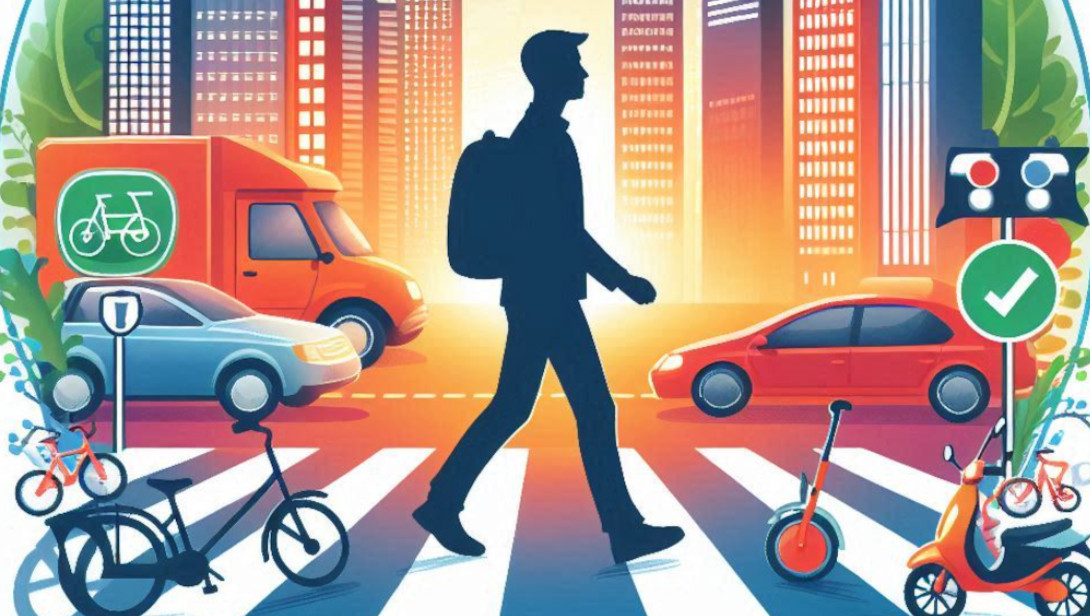· Awe-Source · 5 min read
Enhancing Quiet Vehicle Awareness with Multi-Sensory Technology
Making Roads Safer for Pedestrians with Advanced Sound, Light, and Bluetooth Signals

Enhancing Quiet Vehicle Awareness: The Development of a Multi-Sensory Transport Safety Device
As electric vehicles (EVs) and other quiet modes of transportation like bikes and scooters become more common, a new challenge has emerged: ensuring the safety of pedestrians and other road users. While some EVs are starting to include audio systems that simulate vehicle sounds, these solutions often fall short in truly addressing the risks posed by quiet vehicles. At Awe-Source RnD Solutions, we’ve taken on this challenge by developing a transport safety device designed to make quiet vehicle awareness more accessible and effective.
The Problem: The Inaudibility of Modern Transport
Traditional vehicles are loud, making them easily detectable by pedestrians, cyclists, and other road users. This natural auditory warning is largely absent in electric vehicles, which can move almost silently, especially at lower speeds. While some manufacturers have introduced artificial sounds to simulate engine noise, these solutions are often still too quiet, and it’s not always clear where the sound is coming from, which can lead to dangerous situations.
The need for a comprehensive solution that addresses these shortcomings is critical, not just for cars but for all types of quiet vehicles, including bikes, scooters, and other personal transport devices. That’s where our multi-sensory safety device comes into play.
The Concept: A Multi-Angle Approach to Safety
Our device is designed to go beyond just sound. It “broadcasts” information through multiple channels—sound, lights, and Bluetooth signals—to create a more complete awareness package for pedestrians and other road users. This multi-angle approach ensures that people, regardless of how they experience their surroundings, are more aware of nearby vehicles.
Sound Broadcasting: The device emits sounds that vary based on the vehicle’s speed and movement. For instance, a deeper bass sound might be used at lower speeds, while a higher-pitched hum could indicate higher speeds. This dynamic sound design helps people intuitively understand how a vehicle is moving, even if they can’t see it.
Light Indicators: The system includes lights that can be seen from any direction. These lights change based on the vehicle’s actions—such as accelerating or decelerating—and can even indicate the intensity of these actions. For example, rapid acceleration could trigger a more intense lighting pattern, alerting others to the sudden movement.
Bluetooth Signals: To reach pedestrians who may not be paying attention or those with hearing impairments, the device sends out Bluetooth signals that can be picked up by apps on smartphones or directly by hearing aids. This allows for customized alerts, ensuring that people receive the information in a way that works best for them.
Zoned Awareness: Adapting to the Environment
One of the key features of our device is its ability to adapt to different environments through zoning. Using GPS or geotags, the device can change its behavior based on where it is.
Quiet Zones: In designated quiet zones, the audio output can be reduced or turned off entirely, ensuring that the system does not disrupt the peace while still maintaining safety through lights and Bluetooth signals.
Dynamic Environments: In busy urban areas, the device might increase the volume or intensity of its alerts to ensure it cuts through the noise and catches the attention of pedestrians.
Intelligent Alerts: Beyond Simple Warnings
The system is not just about making vehicles more noticeable; it’s about providing meaningful information. The sounds and lights are designed to communicate more complex data, such as changes in speed or the direction of movement. Additionally, the Bluetooth signals can be used to create collision alerts. If the system detects that the vehicle is closing in on a pedestrian or another object at a dangerous rate, it can send an urgent alert to the user’s app, giving them a chance to react in time.
The Development Process: From Concept to Reality
Developing this device required a deep understanding of both the technological challenges and the practical needs of users. We iterated over many designs, testing different sound profiles, light patterns, and Bluetooth configurations to find the right balance. The challenge was to create a system that was both effective and unobtrusive—one that enhanced safety without overwhelming the user with information.
Throughout the development, we worked closely with experts in vehicle design, acoustics, and user experience to ensure that the final product met the highest standards. We also conducted extensive field testing in various environments, from quiet suburban streets to busy city centers, to refine the system’s zoning capabilities and ensure that it performed well in real-world situations.
The Future of Transport Safety
As more quiet vehicles take to the roads, the need for effective safety solutions will only grow. Our multi-sensory transport safety device is a step forward in making our streets safer for everyone, whether they’re driving, walking, or cycling. By broadcasting sound, light, and Bluetooth signals, we’re providing a comprehensive awareness solution that adapts to the environment and the needs of all road users.
At Awe-Source RnD Solutions, we’re committed to creating technology that makes a real difference in people’s lives. This project is just one example of how we’re using innovation to solve emerging challenges and enhance safety in our communities.
Interested in how this technology can be integrated into your vehicles or infrastructure? Contact us at Awe-Source RnD Solutions to learn more about our work in transport safety and how we can help you stay ahead of the curve.


